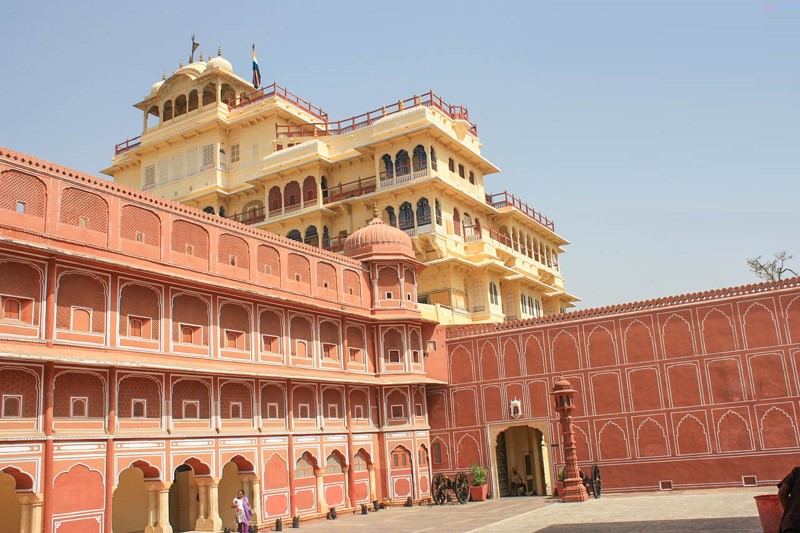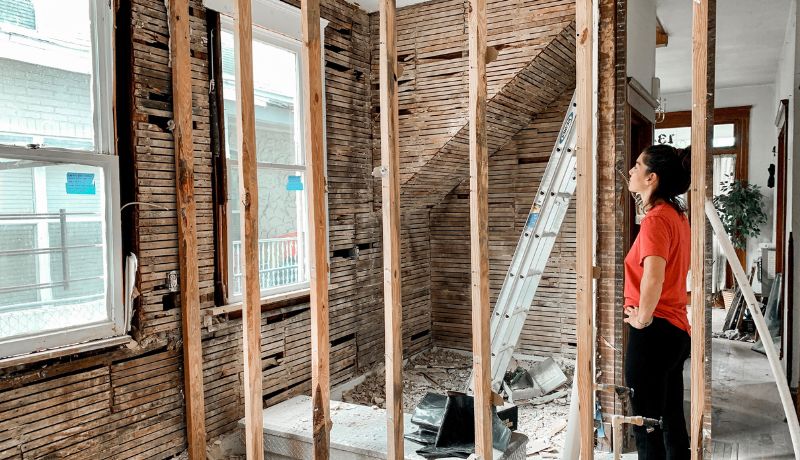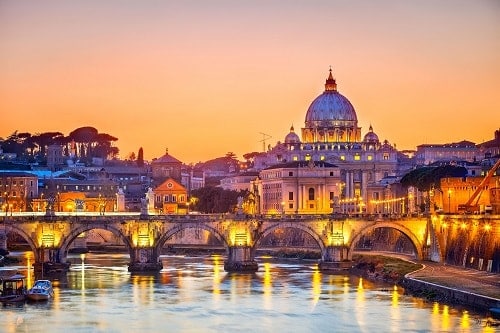Visiting India will not count if you have not visited Jaipur. Jaipur is a princely wonderland of culture and heritage, brimming with architectural gems, and is affectionately nicknamed "The Pink City" for the blushing color of its historic buildings. It's also a major stop on India's well-known Golden Triangle tourist circuit.
Prepare to be enchanted by the splendor of Jaipur, Rajasthan's capital. City Palace gives you a taste of Jaipur's royal family's opulent lifestyle. The astronomical instruments at the Jantar Mantar observatory, located right next door, bring the mysteries of space to Earth. And, depending on when you visit, you might be able to attend one of Jaipur's many festivals, such as the International Kite Festival in January or the Elephant Festival in early spring.
Plan your trip with our guide to Jaipur's most popular attractions and places to see.
City Palace-
For nearly three centuries, City Palace has stood in the heart of Jaipur's Old City, shortly after Maharaja Sawai Jai Singh II decided to relocate his court from Amber. The fairy-tale-like structure, which is still the home of Jaipur's modern-day royal family and is more extravagant and enchanting than you might imagine, is protected by huge guard walls.
City Palace is a sprawling complex of buildings built around a series of landscaped garden courtyards overlooking Jaipur and Lake Palace, and it's more than a sand-colored regal abode. The property as a whole is a stunning example of Rajasthani and Mughal architecture.
The Chandra Mahal, an elegant structure with curved eaves and domed rooftops, is currently home to the current occupants. Each of the seven stories is written in a unique style. The ground floor is included in the admission price, but to go upstairs, you'll need to book a private tour.
The Mubarak Mahal (Welcome Palace), which houses displays of dazzling costumes and textiles; the Armory, a museum-like space dedicated to preserving finely crafted daggers and swords; Pritam Niwas Chowk (Peacock Courtyard), which features mesmerizing doorways painted to look like the feathers of the palace's namesake bird; and Diwan-i-Am (Hall of Public Audience), which houses the palace's exquisite.
After you've seen the palace, go to the Friends of the Museum Bazaar for some of Jaipur's best souvenirs (with equally high prices).
Address- Tulsi Marg, Gangori Bazar, J.D.A Market, Pink City, Jaipur.
Jantar Mantar-
Jantar Mantar may appear to be nothing more than a collection of larger-than-life abstract sculptures at first glance. But this isn't an art gallery; it's a unique collection of astronomical instruments begun nearly 300 years ago by Rajput ruler Jai Singh II to measure the heavens.
Each of the UNESCO World Heritage Sites 20 or so structures serves a distinct purpose. The massive sundial at the observatory, known as Samrat Yantra, is particularly impressive. It casts a massive shadow that accurately measures time down to two seconds at a height of 27 meters.
The intricate design To track the passage of time, Jai Prakash uses the shadow of a metal plate suspended above a sunken bowl-like structure. Other instruments at the observatory can track stars and predict eclipses, among other things.
Address- Gangori Bazar, J.D.A. Market, Pink City, Jaipur
Hawa Mahal-
If you have any preconceived notions about how Jaipur's buildings should look, they most likely stem from the Hawa Mahal (Palace of Breeze). From the salmon-pink, honeycombed facade, built to resemble the Hindu god Krishna's crown, to the geometric accents and rows of tiny windows, it has all of the distinctive architectural features that appear in postcards of the city.
The structure was constructed in 1799 to allow royal ladies to observe festivals on the street without being seen by the general public. Its 953 windows let in a lot of natural light, making it an ideal summer palace.
Visitors can learn about the history of the sandstone structure at the palace's small museum, with the ceremonial armor collection being particularly interesting. You can also go for a walk down the palace's winding corridors. Don't miss the Hawa Mahal's colorful glass work in windows and doorways, which casts an otherworldly glow on the chambers.
Address- Hawa Mahal Rd.,Badi Choupad, J.D.A. Market, Pink City, Jaipur
Amber Fort-
Jaipur is home to Amber Fort, one of India's most visited forts. The sandstone and marble monolith, which was built in 1592, sits atop a small hill about 20 minutes' drive northeast of Jaipur's city center. It is well-known for being an excellent example of Rajasthani architecture.
Amber Fort is usually reached via a short uphill hike that is well worth the effort. It's covered in intricate inlaid marble patterns in nearly every color of the rainbow. The fort is divided into four sections, each with a beautiful garden courtyard on the outside. While you wouldn't know it from above, the fort's underground tunnels, some of which have been restored, can be explored.
The best way for tourists to learn about this UNESCO World Heritage Sites' fascinating history of legends, betrayals, and romance is to hire a private guide at the Amber Fort.
Address- Devisinghpura, Amer, Jaipur
Albert Hall Museum-
The Albert Hall Museum is Rajasthan's oldest museum, and it houses a large collection of art and historically significant artifacts. Come for the Egyptian mummy, but stay for the charming permanent exhibits of miniature paintings, 18th-century costumes worn by members of various castes, and a strange collection of 19th-century clay figures demonstrating all of the yoga poses.
Address- Museum Road, Ram Niwas Garden, Kailash Puri, Adarsh Nagar, Jaipur





![Top 5 Best Ways to Create Your Own Cartoon Character [For Non-illustrators] Top 5 Best Ways to Create Your Own Cartoon Character [For Non-illustrators]](https://www.chattycathy.blog/uploads/img/632d545cdf266.jpg)
